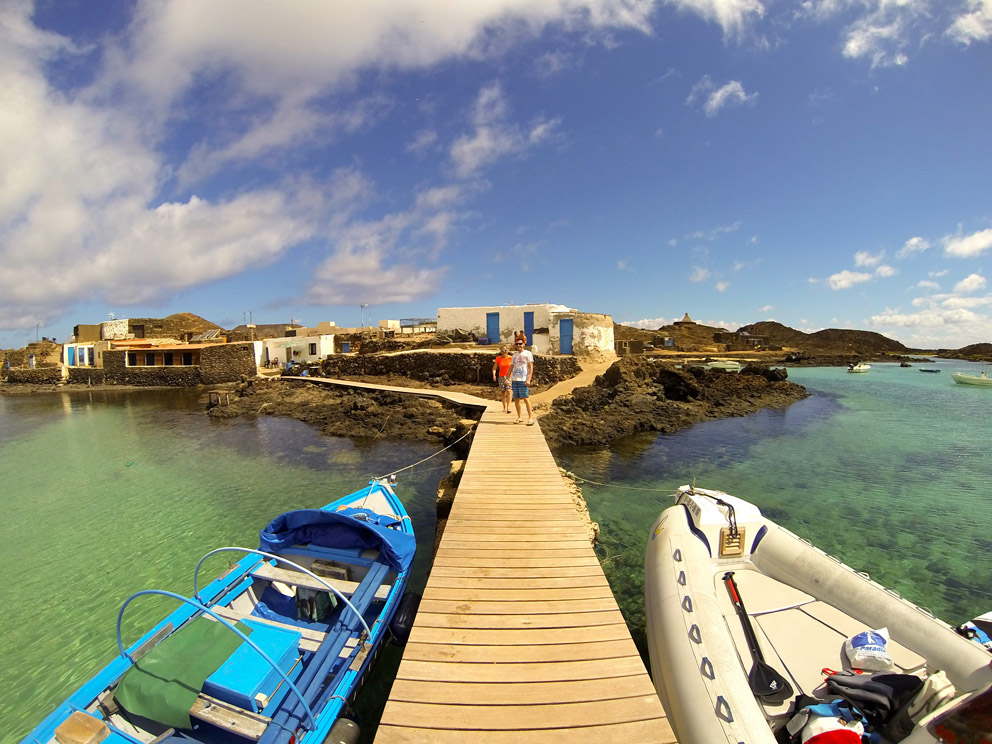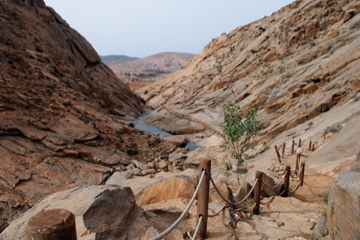It’s several the spectacular landscapes in Fuerteventura; one of them is Cofete, an amazing beach in the southwest of the island, away from everything, still unspoilt despite the tourist development and where we only find cement in a village, an old abandoned cemetery on the beach and Winter’s House. It is this palace which amazes visitors when they get to this spot and realise, at a glance, the majesty of this house, located in such a special place. To reach Cofete you must invest at least 30-minute drive along a track going from Morro Jable to Punta de Jandia, and halfway you will find a detour to the right that is the only path. In this place, away from everything, this mansion was built between 1940 and 1950 at the foot of the Pico de la Zarza, which, because of the spot where it is located and also because of its weird construction, it is today one of the most famous mysteries in Fuerteventura.
Gustav Winter
The protagonist of these stories is a German engineer, Gustav Winter, who arrived in Spain in 1915. Coinciding with the outbreak of World War I Gustav returned from South America, but he was captured by a British ship and imprisoned for a year for being a potential German spy . He manages to get away and get on board of a ship that will allow him to disembark in Spain. In our country he works as an engineer building thermoelectric plants in various cities until in 1925 he moved to the Canary Islands, first to Gran Canaria, where he got involved in initiating La CICER. In his spare time he enjoyed his sailboat sailing around the Canary Islands and that’s how he got to Fuerteventura.
Gustav “the German” leaves Gran Canaria and moves to Fuerteventura, where he acquires the Jandía peninsula, in the south of Fuerteventura, the largest rural property in the Canary Islands, with 180 km2 in an almost desert place.
During World War II he was recruited as an engineer for the German Navy in Bordeaux and when the Germans withdrew from France, he had to take refuge in Spain for the second time.
In 1947 he returns to Fuerteventura with enough money to complete his work and he devotes to exploiting the land by growing tomatoes, alfalfa and raising cattle to market cheese and wool. Years later, already nationalized as Spanish and after the improvements that had been introduced in the area, Gustav tries to develop tourism, attracting German entrepreneurs to the coast of his island. In 1966 he built the first hotel in the south in the middle of a desert and, little by little for nearly 40 years, speculation and support by the government have turned what was once a desert paradise into a hotel area, favorite destination of Germans; but thanks to the Law of Natural Spaces of the Canary Islands, in 1987, places like Cofete remain intact, sidelining the destructive hand of cement. As a curiosity we must point out that Winter’s name appeared in an English list of resident German spies in Spain under Franco’s regime, where he is described as a “German agent in the Canary Islands, in charge of observation posts, equipped with wireless telephony, and also in charge of the supply of German submarines.”
“ The legend!
The famous Winter’s villa has been depicted in several novels because of the mysteries surrounding it. It is said that it was built to provide shelter and to supply the Nazi submarine fleet during World War II, which would access the palace through tunnels that have never been found. It is also said that this house was a refuge for Nazi officers during the war to celebrate ostentatious parties; and it was even said that it could have been a shelter and residence of some German high officer, hidden by the Spanish soldiers, who supported the totalitarian regimes of the time. All these mysteries grow when visiting the house: the floors seem hollow and there are walled-in doors; there is also a turret looking like a lighthouse. It must be said that the Winter family never inhabited this house, as their usual residence was ” El Caserio del alemán”, a estate in the upper area of Morro Jable. The descendants of Gustav Winter deny all these rumors, especially because the house was not built until 1947, but the historical memory of the area recalls that in 1940 its construction had already begun.
Winter’s villa, located on such a virgin and desert area of Fuerteventura, still brings more magic and mystery to this spectacular place: the beach of Cofete, we insist, worth to admire and enjoy, like so many other wonderful places on this island.
FuerteCharter Team






